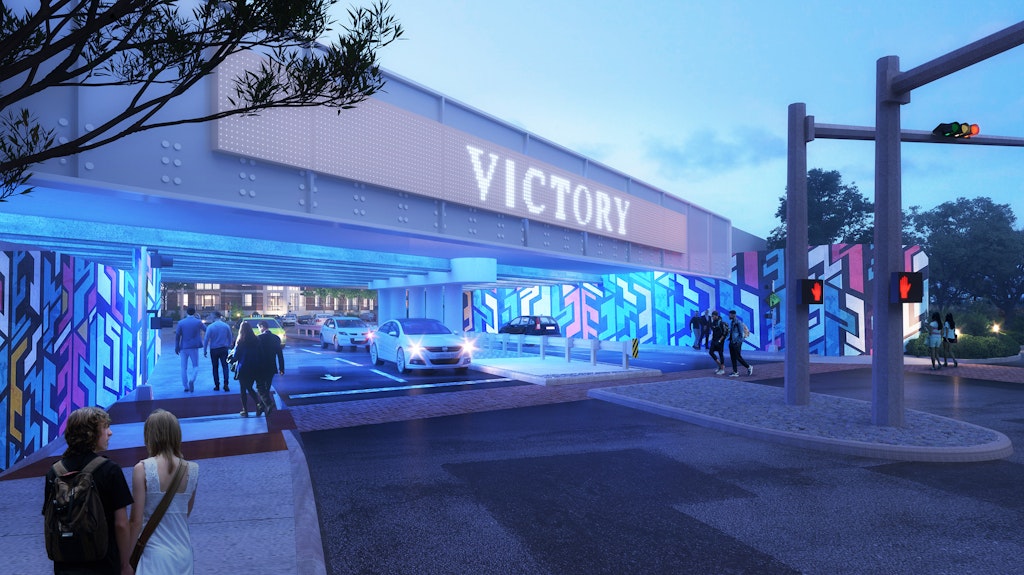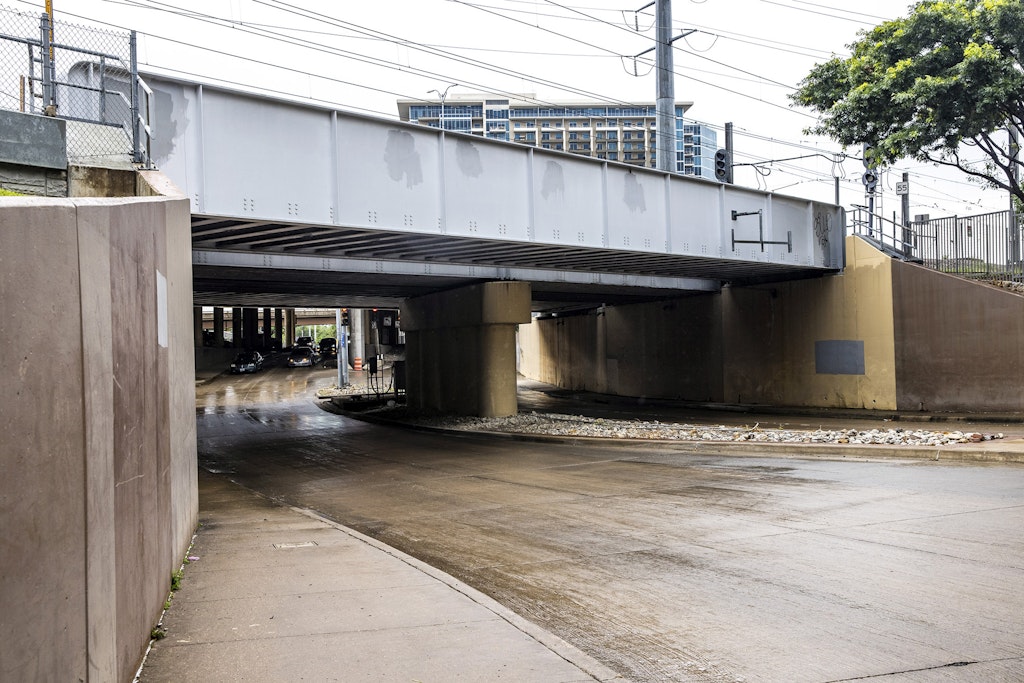PARKS AND RECREATION
Plan to connect Dallas’ trails closer to reality
A complicated, one-mile connection extending downtown Dallas’ popular Katy Trail from east of Interstate 35E to the Trinity River side on the west is getting a big green light.
The $22.2 million project, known as the Hi Line Connector, would link Victory Park to the Design District and Trinity River, potentially opening property west of the major highway to new development.
A city of Dallas board in charge of providing enhanced public improvements this week recommended spending $11.6 million in tax increment financing to go along with more than $10 million in state and city funds and private donations to get the project moving.
It now goes before Dallas City Council’s economic development committee and full council for approvals. That’s expected to occur in the next 30 days.
The Katy Trail connection to the Trinity Strand Trail is part of a 10-year project called The Loop, which started in 2016 with a mission to link 39 miles of existing trails with 11 miles of new trails to create a complete 50-mile circle. A lack of green space is one reason Dallas famously lost out on becoming home to Amazon’s second headquarters.
“This project is going to change the way people perceive Dallas,” said Philip Hiatt Haigh, executive director of the nonprofit leading the effort, Circuit Trail Conservancy.
The connection is complex because it must bypass I-35E and an active DART/TRE rail line.
“The reason most trails are only three to four miles in Dallas is that they reach an endpoint because it’s incredibly difficult to cross boundaries of railroad tracks, highways, roads and power lines,” said CTC chairman Jeff Ellerman.
‘Checks all the boxes’
Ellerman said the conservancy is “very confident” the project will win council approval because it connects communities in downtown Dallas to each other, as well as to green space and public transportation.
“It checks all the boxes,” he said.
Mayor Eric Johnson, who wasn’t available Friday for comment, also is “very supportive” of The Loop because it will add vibrancy to city neighborhoods, said spokesman Tristan Hallman in an email.
Once approved, construction on the Hi Line Connector would start later this year and take about two years to complete, Ellerman said.
The yet-to-be-built trail would bring together two areas of the city seeing considerable development. In the Design District, for example, a 16-story Virgin Hotel opened in January 2020. In Victory Park, Dallas developer Hillwood Urban is nearing completion of its 15-story, 365,000-square-foot Victory Commons One building.
Dallas parks are estimated to return $678 million to the local economy, with more than half coming from new real estate development and increased property values in neighborhoods, according to a 2016 study by HR&A Advisors. That amounts to a $7 return on every $1 spent on parks. It’s even higher for trails — $50 for every $1.
The connection will start at the Katy Trail and North Houston Street on the east side of I-35E. The original plan was to build a bridge over the busy highway. This version goes underneath but raises the underpass so that pedestrians and cyclists feel safe and separate from traffic.
“It’s a mess currently. It’s not pleasant,” Hiatt Haigh said. “But we want to fix it up so people feel comfortable and enjoy it.”
The trail portion that runs underneath the highway will cost $1.5 million. It will include lighting and art installations.
Once pedestrians reach the other side, the trail will turn into a more traditional 12-foot-wide concrete trail that will go through the Design District and connect to the Trinity Strand Trail on the West.
Big Apple vibes
The Loop started with former Mayor Mike Rawlings after a 230-mile master trail plan was passed in 2008. Without a private-sector advocate, the plan would cost the city hundreds of millions of dollars and take decades to finish. That’s when CTC stepped in.
So far, the nonprofit has secured $10 million from private donors, $20 million from a 2017 bond package, $8 million for the Hi Line Connector from the Texas Department of Transportation and $5 million for the Trinity Forest Spine Trail in the White Rock Lake area.
Hiatt Haigh said the team has taken inspiration from New York’s High Line, a 1.45-mile elevated rail trail in Manhattan, and its even more famous Central Park.
“It’s the gold standard for public spaces,” he said. “We’re trying to take some of those best practices and implement those into Dallas.”
While a 50-mile loop sounds daunting, starting with 39 miles of already-built trails is a game-changer, Ellerman said.
“Most of the trails are already built, and we have all the funds now basically to do this. We have all the architectural drawings and all the engineering in place,” he said. “Now we just have to connect the trails. It will be a legacy asset to Dallas.”
Twitter: @NatalieReporter
